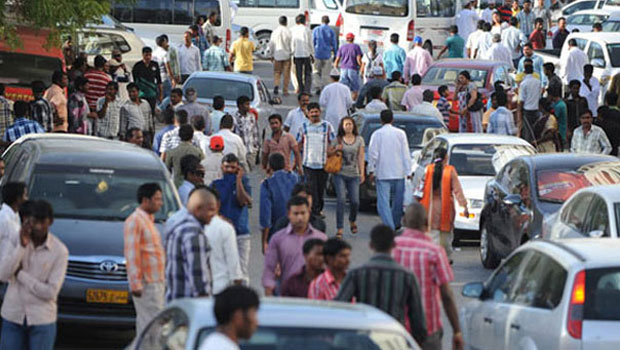
Muscat: The Sultanate witnessed a 1 per cent increase in expatriate workers, as of the end of April 2016, totalling 1,763,710 workers compared with 1,747,097 workers at the end of March 2016.
A report issued by the National Centre for Statistics and Information (NCSI) revealed that expatriate workers in the Sultanate are employed across three sectors: government, private and family sectors, and are made up of 1,564,532 men and 199,178 women. The number of workers in the private sector, as of the end of April 2016, reached 1,430,965, including 32,412 women and 1,398,553 men, reflecting an increase of 1 per cent , compared with March 2016.
Furthermore, expatriates working in the family sector increased by 0.9 per cent by the end of April 2016, totalling 271,250, including 144.909 women and 126.341 men, compared to the end of March 2016.
Meanwhile, the number of workers in the government sector, as of April 2016, reached 61,495, reflecting an increase of 0.1 per cent and included 39,638 men and 21,857 women, compared to March 2016 figures.
The construction sector employed the largest number of expatriate workers, totalling 652.439 workers, followed by wholesale and retail trade, cars and motorbikes preparations, and personal and family goods, totalling 221,307 workers, while the manufacturing sector reached 199,725 workers.
Regarding their educational backgrounds, 649.380 expatriate workers have intermediate certificates, including 68,822 women and 580,558 men, while 475,427 including 54,360 women and 421,067 men are categorized as being able to read and write.
The percentage of expatriate workers who hold primary school certificates reached 160,020, including 19,658 women and 140,362 men at the end of April 2016, while the number of illiterate workers reached 25,140 workers, including 2,960 women, in addition to 22,180 men.
Additionally, the number of expatriate workers who hold secondary school certificates was 262,668 workers, including 17,563 women, along with 245,105 men.
The number of expatriate workers who hold diploma certificates reached 53,527 persons, including 9,202 women and 44,325 men.
Those expatriate workers who are university graduates reached 94,494 persons, including 17,122 women and 77,372 men.
The number of expatriate workers who hold higher diplomas increased by 1 per cent to reach 4,907 persons. However, the percentage of workers who hold Master’s degrees decreased by 0.1 per cent at 5,839 persons. The number of PhD holders decreased, as well, by 0.1 per cent, to reach 2,823 expatriate workers.
As for nationalities, the majority of expatriate workers were Indians. Indian expatriates working in the Sultanate reached 687,592, with an increase of 1 per cent, including 38,392 women and 649,200 men.
Also, workers from Bangladesh reached 630,433, with an increase of 3.5 per cent, which included 32,833 women and 597,600 men. The percentage of Pakistani workers also increased by 1.1 per cent to reach 225,112, including 1,227 women and 223,885 men.
Further, Ethiopian workers decreased by 5.6 per cent to reach 21,221, with the majority of them being women. The women Ethiopian workers reached 21,013, while there were 208 men workers.
Female workers also constituted the majority of Indonesian workers, with women making up 27,681 out of the total number of 28,323Indonesian workers.
The number of expatriate workers coming from the Philippines reached 36,570, including 24,403 women and 12,167 men.
Egyptian workers decreased by 0.9 per cent to reach 24,937, including 5,776 women and 19,161 men.
Nepali workers reached 14,000, including 4,176 women, while the number of Sri Lankan workers reached 16,885, including 9,830 women, in addition to 7,055 men, comprising an increase of 3.3 per cent.
Also, the number of workers from other nationalities reached 78,637, reflecting a growth rate of 3.9 per cent.